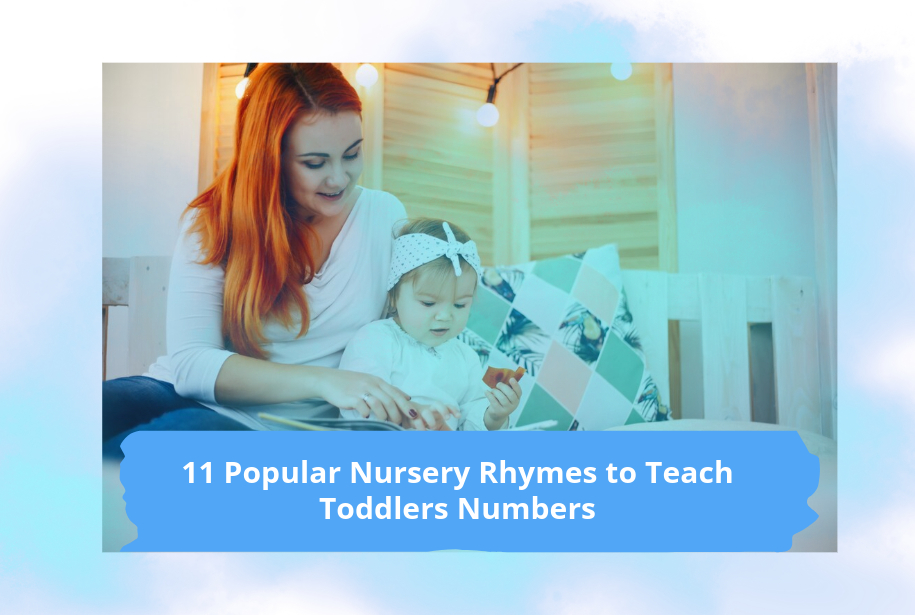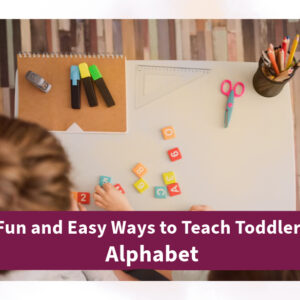Introducing toddlers to numbers through nursery rhymes is one of the most effective ways to make learning fun and engaging. Nursery rhymes combine rhythm, repetition, and storytelling, which can greatly enhance a child’s ability to grasp basic numeracy concepts. In this blog, we’ll explore 11 popular nursery rhymes that are perfect for helping toddlers learn numbers. We’ll delve into the educational value of each rhyme and provide tips on how to maximize their learning potential.
Popular Number Nursery Rhymes
One, Two, Buckle My Shoe
“One, Two, Buckle My Shoe” is a timeless classic that introduces children to counting from 1 to 10. The repetitive lyrics and actions make it easy for toddlers to remember and enjoy.
Lyrics:
One, two, buckle my shoe;
Three, four, shut the door;
Five, six, pick up sticks;
Seven, eight, lay them straight;
Nine, ten, a big fat hen.
Educational Value:
– Teaches counting from 1 to 10.
– Helps children associate numbers with actions.
– Enhances memory through repetition.
Learning Tips:
– Use physical actions to accompany the lyrics, such as miming buckling a shoe or shutting a door.
– Incorporate objects like shoes and sticks to make the rhyme more interactive.
Five Little Ducks
“Five Little Ducks” is a beloved rhyme that teaches subtraction as the number of ducks decreases in each verse. It’s a fun way to introduce the concept of counting backward.
Lyrics:
Five little ducks went out one day,
Over the hills and far away.
Mother duck said, “Quack, quack, quack, quack,”
But only four little ducks came back.
Educational Value:
– Introduces basic subtraction.
– Reinforces counting backward.
– Engages children with a simple story.
Learning Tips:
– Use duck puppets or toys to act out the song.
– Ask your child questions about how many ducks are left after each verse to reinforce subtraction.
Ten in the Bed
“Ten in the Bed” is a fun and repetitive song that helps toddlers practice counting down from ten. The playful narrative keeps children engaged as they learn.
Lyrics:
There were ten in the bed,
And the little one said, “Roll over, roll over.”
So they all rolled over and one fell out.
There were nine in the bed,
And the little one said, “Roll over, roll over.”
Educational Value:
– Teaches counting down from ten.
– Reinforces the concept of subtraction.
– Encourages group participation and movement.
Learning Tips:
– Use a bed and stuffed animals to act out the rhyme.
– Encourage children to count along as each animal falls out of bed.
Five Little Monkeys Jumping on the Bed
This energetic rhyme is perfect for active toddlers. It combines counting down from five with a fun narrative about monkeys jumping and falling off the bed.
Lyrics:
Five little monkeys jumping on the bed,
One fell off and bumped his head.
Mama called the doctor and the doctor said,
“No more monkeys jumping on the bed!”
Educational Value:
– Teaches counting down and subtraction.
– Enhances language skills with repetitive phrases.
– Engages children through physical activity and storytelling.
Learning Tips:
– Use finger puppets or toy monkeys to illustrate the song.
– Have children jump along with the monkeys to make it a physical activity.
One, Two, Three, Four, Five (Once I Caught a Fish Alive)
This rhyme uses a simple fishing story to help toddlers count from one to ten, making it a great introduction to number sequences.
Lyrics:
One, two, three, four, five,
Once I caught a fish alive.
Six, seven, eight, nine, ten,
Then I let it go again.
Educational Value:
– Reinforces counting from one to ten.
– Introduces the concept of sequencing.
– Enhances language skills through storytelling.
Learning Tips:
– Use toy fish and a fishing rod to act out the rhyme.
– Encourage children to count their “catch” and release.
Hickory Dickory Dock
“Hickory Dickory Dock” introduces numbers through the story of a mouse running up and down a clock, making it an excellent way to combine number learning with the concept of time.
Lyrics:
Hickory dickory dock,
The mouse ran up the clock.
The clock struck one,
The mouse ran down,
Hickory dickory dock.
Educational Value:
– Introduces numbers in the context of time.
– Enhances understanding of sequencing.
– Engages children with a simple, repetitive story.
Learning Tips:
– Use a clock and a toy mouse to act out the rhyme.
– Discuss the numbers on the clock and what happens at each hour.
Five Green and Speckled Frogs
This rhyme teaches subtraction through a fun story of frogs jumping off a log into a pool. It’s a great way to introduce basic arithmetic concepts.
Lyrics:
Five green and speckled frogs
Sat on a speckled log
Eating some most delicious bugs.
One jumped into the pool
Where it was nice and cool,
Then there were four green speckled frogs.
Educational Value:
– Teaches counting down and subtraction.
– Enhances memory through repetition.
– Engages children with a fun, interactive story.
Learning Tips:
– Use toy frogs and a log to act out the rhyme.
– Encourage children to count the frogs as they jump off the log.
Ten Green Bottles
A classic British counting rhyme, “Ten Green Bottles” helps children practice counting down from ten to zero.
Lyrics:
Ten green bottles hanging on the wall,
Ten green bottles hanging on the wall,
And if one green bottle should accidentally fall,
There’ll be nine green bottles hanging on the wall.
Educational Value:
– Reinforces counting backward.
– Introduces basic subtraction.
– Enhances understanding of number sequences.
Learning Tips:
– Use green bottles or similar items to illustrate the rhyme.
– Have children remove one bottle at a time as they sing the song.
One Potato, Two Potato
“One Potato, Two Potato” is a traditional counting rhyme often used as a game. It’s a fun and interactive way for toddlers to learn numbers.
Lyrics:
One potato, two potato, three potato, four,
Five potato, six potato, seven potato, more.
Educational Value:
– Teaches number recognition.
– Enhances memory through repetition.
– Encourages interactive learning through play.
Learning Tips:
– Use real or toy potatoes to play along with the rhyme.
– Encourage children to count the potatoes as they sing.
The Ants Go Marching
“The Ants Go Marching” uses the familiar tune of “When Johnny Comes Marching Home” to help children practice counting with a fun story about ants.
Lyrics:
The ants go marching one by one, hurrah, hurrah,
The ants go marching one by one, hurrah, hurrah,
The ants go marching one by one,
The little one stops to suck his thumb,
And they all go marching down to the ground to get out of the rain.
Educational Value:
– Teaches counting in a sequential order.
– Enhances language skills through rhyme and repetition.
– Engages children with a fun, interactive story.
Learning Tips:
– Use toy ants or drawings to illustrate the song.
– Encourage children to march along as they count.
This Old Man
“This Old Man” is a counting rhyme that introduces numbers and rhyming pairs, making it a great tool for developing language and numeracy skills.
Lyrics:
This old man, he played one,
He played knick-knack on my thumb.
With a knick-knack paddywhack, give a dog a bone,
This old man came rolling home.
Educational Value:
– Teaches counting from one to ten.
– Enhances language skills through rhyme and repetition.
– Introduces basic arithmetic concepts.
Learning Tips:
– Use props like a drum or a stick to play along with the rhyme.
– Encourage children to count and identify body parts mentioned in the song.
Conclusion:
Nursery rhymes are a powerful tool in early childhood education, providing a fun and engaging way to introduce toddlers to numbers and basic arithmetic concepts. By incorporating rhythm, repetition, and storytelling, these rhymes help children develop their numeracy skills in an enjoyable and memorable way. Whether you’re singing about ducks, monkeys, or frogs, each of these 11 nursery rhymes offers unique educational value and endless opportunities for interactive learning. So grab your toys, props, and a little imagination, and make counting a joyful part of your toddler’s daily routine.








One thought on “11 Popular Nursery Rhymes to Teach Toddlers Numbers”